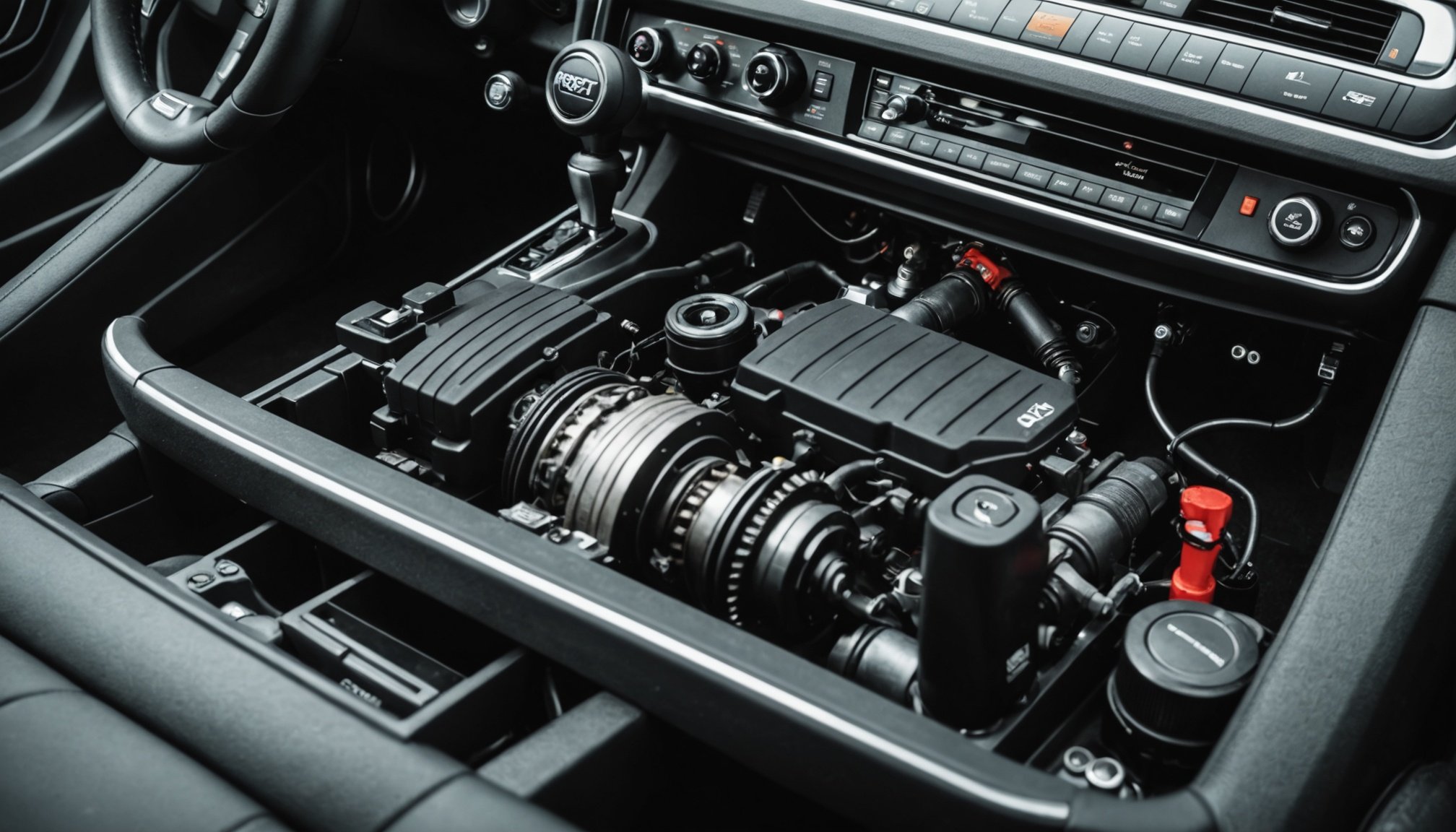Understanding Transmission Lifespan
The transmission is integral for optimal vehicle performance, converting engine power to momentum. Without effective transmission care, the vehicle’s performance can diminish.
Common Factors Affecting Transmission Longevity
Various factors influence transmission longevity. Regular car maintenance, including adhering to recommended service intervals, is critical to curbing wear and tear. Environmental conditions, such as extreme temperatures, can also impact transmission lifespan. Additionally, driving habits play a crucial role; aggressive driving and frequent stopping can strain the transmission, leading to premature failure.
Also to see : Top 10 proven tips for uk motorists to reduce their vehicle”s carbon footprint
Myths and Misconceptions About Transmissions
Many myths surround transmission longevity, misleading car owners. One common misconception is that transmissions are maintenance-free, which is far from the truth. Like any other vehicle component, regular checks and timely fluid changes are vital for transmission care. Another myth is that automatic transmissions are inherently inferior to manual ones. In reality, each type has its pros and cons, and longevity largely depends on maintenance practices rather than transmission type.
Debunking these myths contributes to informed decisions, ensuring proactive maintenance that enhances transmission lifespan. Correct understanding and regular car maintenance empower owners to maximise their vehicle’s performance and longevity effectively.
Also to see : Unlocking value: the definitive guide to the uk diesel car scrappage scheme and profiting from your old vehicle
Local Driving Conditions in the UK
Understanding UK driving conditions is crucial for maintaining transmission longevity. The regional climate significantly impacts transmission performance. For example, cold weather can thicken transmission fluid, causing delayed gear engagement and increased wear. Additionally, frequent short trips in urban areas, with stop-and-start traffic, can stress the transmission more than consistent speeds on rural roads.
In rural areas, longer journeys and fewer stops can improve fuel efficiency and reduce strain on the transmission. However, rough terrain and unpaved roads present their challenges. It’s essential to adapt driving habits based on location to support the health of your vehicle’s transmission.
Embracing specific strategies can mitigate the effects of UK weather and road conditions on your car. For instance, warming up the vehicle in colder months ensures the transmission fluid reaches optimal viscosity, safeguarding parts from excessive wear. Being aware of these regional factors empowers drivers to adjust driving habits, optimise vehicle performance, and extend the vehicle’s lifespan. Engaging in regular transmission maintenance and being mindful of regional driving conditions can play a pivotal role in promoting long-term vehicle reliability.
Maintenance Practices for Transmissions
Regular transmission maintenance is crucial for ensuring the smooth operation and extended lifespan of your vehicle’s transmission system. One of the most essential tasks is checking the transmission fluid levels. Fluid acts as both a lubricant and coolant, preventing overheating and friction damage. Therefore, maintaining correct fluid levels and quality is vital for transmission health.
Adhering to recommended service intervals is another key aspect of maintenance. These intervals typically suggest when to replace or top up transmission fluid, perform inspections, and check for leaks or component wear. Following these guidelines helps in identifying potential issues before they escalate.
Recognising transmission problems early can prevent costly repairs. Common signs include unusual noises, slipping gears, or delayed response when shifting. By addressing these symptoms swiftly, you can avoid more severe damage.
In sum, integrating a routine of regular fluid checks and adhering to service intervals ensures a proactive approach to transmission maintenance. This not only mitigates risks but also enhances vehicle performance. Remember, vigilant maintenance is the cornerstone of prolonging transmission longevity and reliability.
Driving Tips to Extend Transmission Life
Adopting optimal driving habits promotes transmission longevity and boosts fuel efficiency. Commence trips gently. Avoid rapid acceleration and abrupt braking to minimise undue strain on the transmission system. These smooth transitions not only preserve the transmission but also enhance overall driving experience.
Focus on maintaining steady speeds and anticipate traffic changes. This approach reduces frequency of gear shifts, particularly in urban settings where stop-and-start situations often prevail. In rural areas, driving on uneven or challenging terrain implies moderate speeds to mitigate potential transmission stress.
Fuel efficiency is closely tied to transmission upkeep. Efficient driving techniques decrease fuel consumption and lessen transmission workload. Utilising cruise control on highways stabilises speed, fostering a balanced engine load. This preserves fuel and supports the transmission’s capacity.
For different scenarios, adapt your driving techniques. In wet conditions, minimise sudden manoeuvres to retain traction and safeguard transmission functionality. On steep inclines, shift into lower gears to prevent overheating and facilitate smooth engine operations.
In sum, conscientious driving not only prolongs transmission life but also optimises vehicle functionality. Implement these practices consistently to experience the compounded benefits of a well-maintained vehicle.
Common Transmission Issues and Solutions
Understanding common transmission problems is vital for maintaining vehicle health. Typical issues encountered by UK drivers include gear slipping, rough shifting, and unusual noises. If you notice such symptoms, immediate action is essential to prevent further damage.
To troubleshoot, begin with a thorough inspection of the transmission fluid. Low or dirty fluid can lead to gear slipping and overheating. Regular fluid checks and timely changes can often resolve minor issues. However, persistent problems should prompt professional diagnosis, as they may indicate more serious internal malfunctions.
When facing transmission challenges, the decision between repair and replacement can be daunting. Repairing issues like worn-out seals or solenoids is often cost-effective. However, extensive damage might necessitate a full transmission replacement, especially if the vehicle’s overall mileage suggests imminent failures.
- Immediate Steps: Address fluid levels, check for leaks, seek professional assessment.
- Repair vs. Replacement: Consider cost, extent of damage, vehicle age, and mileage.
Awareness of common transmission problems and taking swift, informed actions can safeguard your vehicle’s transmission and ensure longevity. Regular maintenance and attention to emerging issues are key to effective transmission care.
Checklist for Maintaining Transmission Health
Maintaining transmission health involves a proactive approach to ensure your vehicle runs smoothly and efficiently. A transmission checklist can be a valuable tool for this purpose.
- Regular Fluid Checks: Ensure transmission fluid is at the appropriate level and in good condition. This prevents overheating and friction issues.
- Service Intervals: Adhere to recommended service intervals which include fluid replacement, inspections, and checks for leaks or wear.
- Monitor Vehicle Symptoms: Be vigilant for unusual noises, gear slipping, or delayed shifting. These can be early signs of transmission problems requiring attention.
Implementing these maintenance tips aids in preventive care. It’s essential to keep a log of maintenance activities to track patterns and pinpoint emerging issues. Regular inspections can highlight minor discrepancies before they escalate into costly repairs.
Key indicators of a healthy transmission include smooth gear shifting, absence of leaks, and clean fluid. By routinely checking these aspects, you ensure the longevity of your transmission.
For further information, consult your vehicle’s manual or a professional mechanic who can provide tailored advice. Maintaining a well-serviced transmission will lead to improved vehicle performance and assure a prolonged lifespan.
Conclusion: Empowering Car Owners
Taking control of car ownership implies embracing driver responsibility through continual education and practice in vehicle maintenance. The essence of informed decisions lies in understanding the nuances of your car’s transmission system, which is pivotal for sustaining performance and reliability. With proactive strategies, drivers can foster a culture of preventive transmission care that prevents costly repairs and prolongs vehicle life.
Car owners can enhance their vehicles’ health by recognising and rectifying transmission problems promptly. By doing so, they ensure that minor issues do not escalate into major ones. Such vigilance entails staying informed about service intervals and being responsive to any unusual symptoms like unintended gear shifts or noises. Engaging with professional mechanics for routine inspections can also support this proactive approach.
Monitoring driving habits is critical, as driving with undue aggression can adversely impact the transmission. Adapting safe driving practices promotes not only transmission longevity but also comprehensively boosts fuel efficiency. Prioritising smooth acceleration and deceleration ensures a stable engine load and minimises unnecessary strain on vehicle components.
Ultimately, embracing a systematic approach to transmission care and maintenance will empower car owners to maintain their vehicles’ performance while enhancing their ownership experience.











